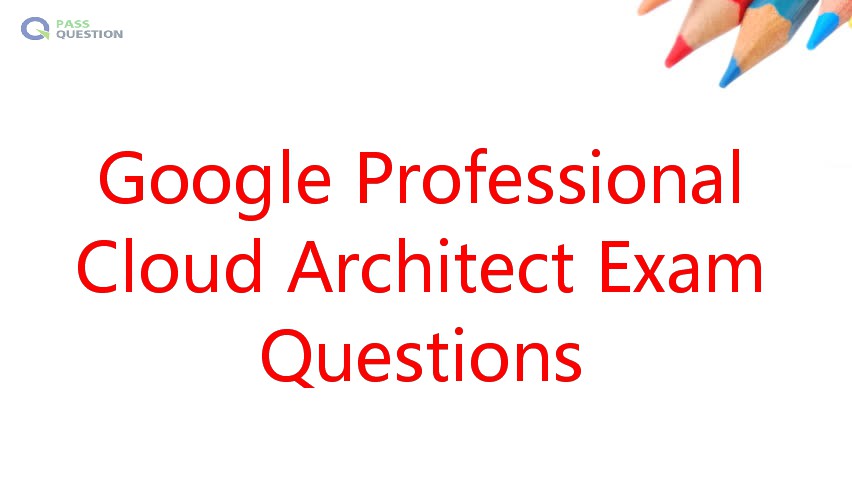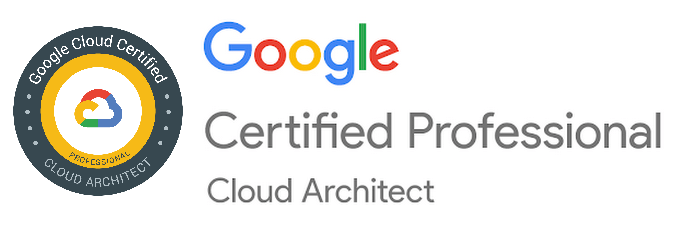Google Professional Cloud Architect Exam Questions
If you want to become Google Certified Professional Cloud Architect,you can get valid Google Professional Cloud Architect Exam Questions from PassQuestion to best prepare for your test,it can guarantee that you can in a short period of time to learn and to strengthen the professional knowledge of IT and pass Professional Cloud Architect exam with high score. With PassQuestion Google Professional Cloud Architect Exam Questions, you could throw yourself into the exam preparation completely.
Professional Cloud Architect - Google Certified Professional – Cloud Architect (GCP)
A Professional Cloud Architect enables organizations to leverage Google Cloud technologies. With a thorough understanding of cloud architecture and Google Cloud Platform, this individual can design, develop, and manage robust, secure, scalable, highly available, and dynamic solutions to drive business objectives.
The Cloud Architect should be proficient in all aspects of enterprise cloud strategy, solution design, and architectural best practices. The Cloud Architect should also be experienced in software development methodologies and approaches including multi-tiered distributed applications which span multi-cloud or hybrid environments.
About this certification exam
Length: 2 hours
Registration fee: $200 (plus tax where applicable)
Languages: English, Japanese.
Exam format: Multiple choice and multiple select, taken remotely or in person at a test center.
Recommended experience: 3+ years of industry experience including 1+ years designing and managing solutions using GCP.

The Google Cloud Certified - Professional Cloud Architect exam assesses your ability to:
- Design and plan a cloud solution architecture
- Manage and provision the cloud solution infrastructure
- Design for security and compliance
- Analyze and optimize technical and business processes
- Manage implementations of cloud architecture
- Ensure solution and operations reliability
1. Designing and planning a cloud solution architecture
1.1 Designing a solution infrastructure that meets business requirements. Considerations include:
- Business use cases and product strategy
- Cost optimization
- Supporting the application design
- Integration with external systems
- Movement of data
- Design decision trade-offs
- Build, buy, or modify
- Success measurements (e.g., key performance indicators [KPI], return on investment [ROI], metrics)
- Compliance and observability
1.2 Designing a solution infrastructure that meets technical requirements. Considerations include:
- High availability and failover design
- Elasticity of cloud resources
- Scalability to meet growth requirements
- Performance and latency
1.3 Designing network, storage, and compute resources. Considerations include:
- Integration with on-premises/multi-cloud environments
- Cloud-native networking (VPC, peering, firewalls, container networking)
- Choosing data processing technologies
- Choosing appropriate storage types (e.g., object, file, RDBMS, NoSQL, NewSQL)
- Choosing compute resources (e.g., preemptible, custom machine type, specialized workload)
- Mapping compute needs to platform products
1.4 Creating a migration plan (i.e., documents and architectural diagrams). Considerations include:
- Integrating solution with existing systems
- Migrating systems and data to support the solution
- Licensing mapping
- Network planning
- Testing and proof of concept
- Dependency management planning
1.5 Envisioning future solution improvements. Considerations include:
- Cloud and technology improvements
- Business needs evolution
- Evangelism and advocacy
2. Managing and provisioning a solution Infrastructure
2.1 Configuring network topologies. Considerations include:
- Extending to on-premises (hybrid networking)
- Extending to a multi-cloud environment that may include GCP to GCP communication
- Security and data protection
2.2 Configuring individual storage systems. Considerations include:
- Data storage allocation
- Data processing/compute provisioning
- Security and access management
- Network configuration for data transfer and latency
- Data retention and data life cycle management
- Data growth management
2.3 Configuring compute systems. Considerations include:
- Compute system provisioning
- Compute volatility configuration (preemptible vs. standard)
- Network configuration for compute nodes
- Infrastructure provisioning technology configuration (e.g. Chef/Puppet/Ansible/Terraform/Deployment Manager)
- Container orchestration with Kubernetes
3. Designing for security and compliance
3.1 Designing for security. Considerations include:
- Identity and access management (IAM)
- Resource hierarchy (organizations, folders, projects)
- Data security (key management, encryption)
- Penetration testing
- Separation of duties (SoD)
- Security controls (e.g., auditing, VPC Service Controls, organization policy)
- Managing customer-managed encryption keys with Cloud KMS
3.2 Designing for compliance. Considerations include:
- Legislation (e.g., health record privacy, children’s privacy, data privacy, and ownership)
- Commercial (e.g., sensitive data such as credit card information handling, personally identifiable information [PII])
- Industry certifications (e.g., SOC 2)
- Audits (including logs)
4. Analyzing and optimizing technical and business processes
4.1 Analyzing and defining technical processes. Considerations include:
- Software development life cycle plan (SDLC)
- Continuous integration / continuous deployment
- Troubleshooting / post mortem analysis culture
- Testing and validation
- Service catalog and provisioning
- Business continuity and disaster recovery
4.2 Analyzing and defining business processes. Considerations include:
- Stakeholder management (e.g. influencing and facilitation)
- Change management
- Team assessment / skills readiness
- Decision-making process
- Customer success management
- Cost optimization / resource optimization (capex / opex)
4.3 Developing procedures to ensure resilience of solution in production (e.g., chaos engineering)
5. Managing implementation
5.1 Advising development/operation team(s) to ensure successful deployment of the solution. Considerations include:
- Application development
- API best practices
- Testing frameworks (load/unit/integration)
- Data and system migration tooling
5.2 Interacting with Google Cloud using GCP SDK (gcloud, gsutil, and bq). Considerations include:
- Local installation
- Google Cloud Shell
6. Ensuring solution and operations reliability
6.1 Monitoring/logging/profiling/alerting solution
6.2 Deployment and release management
6.3 Assisting with the support of solutions in operation
6.4 Evaluating quality control measures
- TOP 50 Exam Questions
-
Exam
All copyrights reserved 2025 PassQuestion NETWORK CO.,LIMITED. All Rights Reserved.


